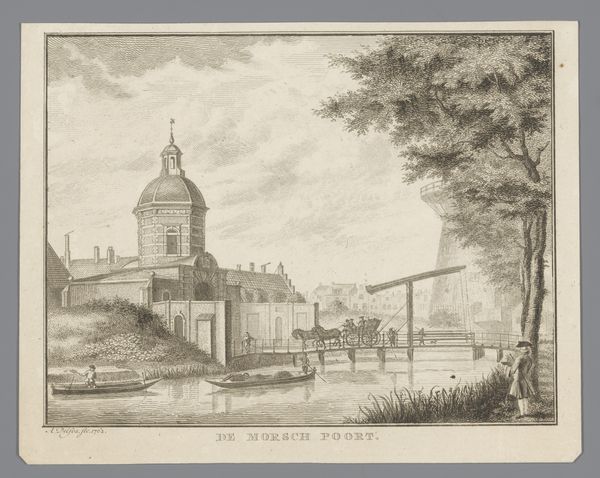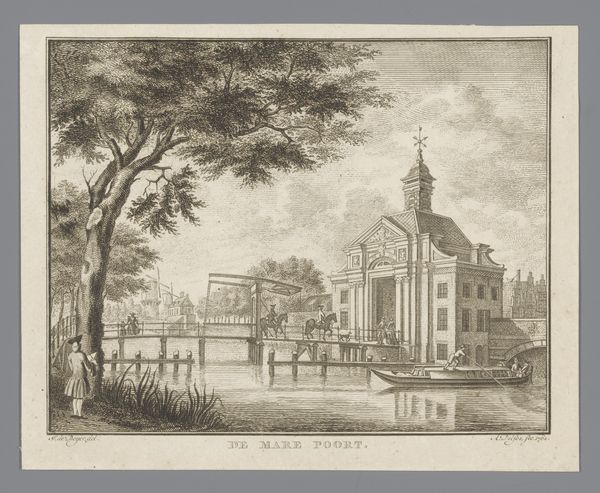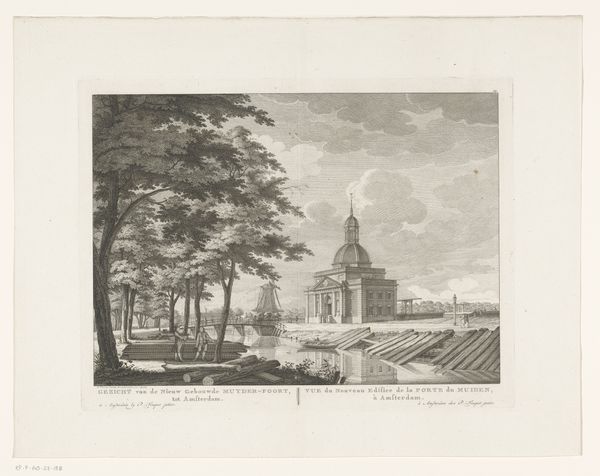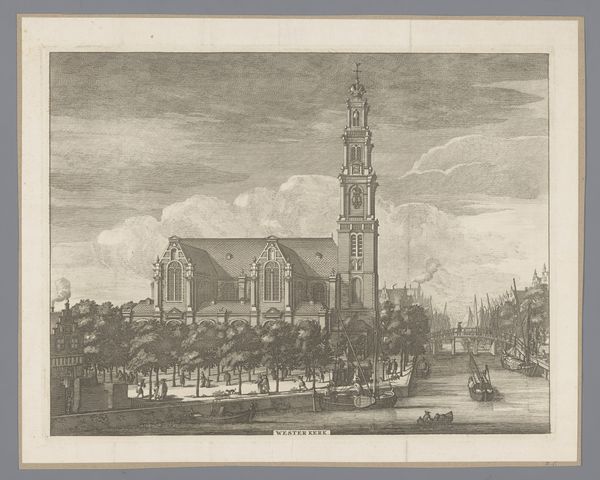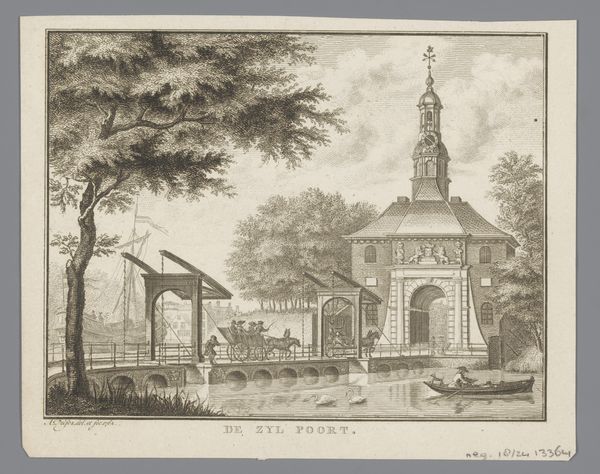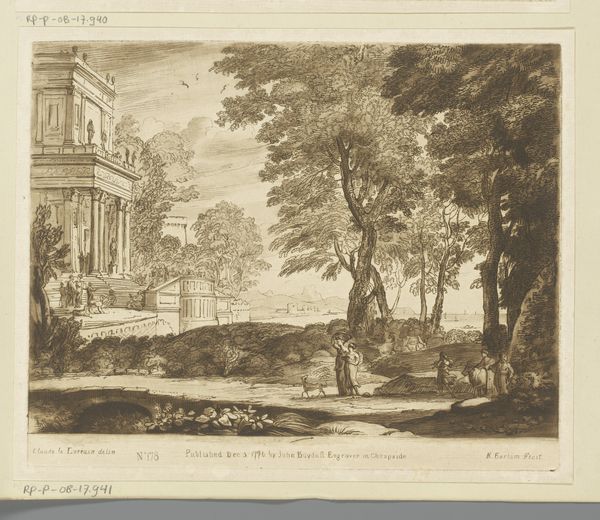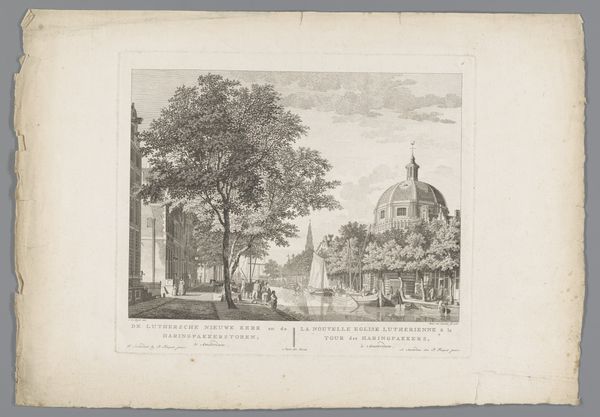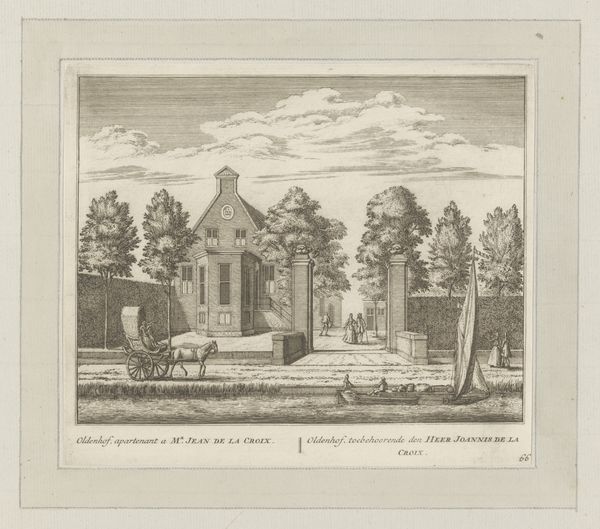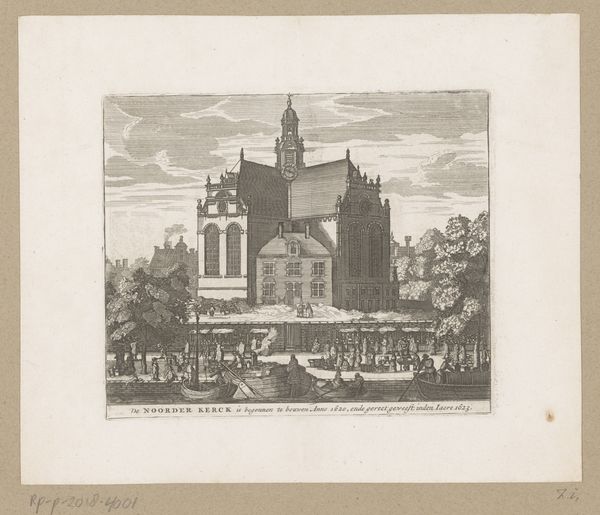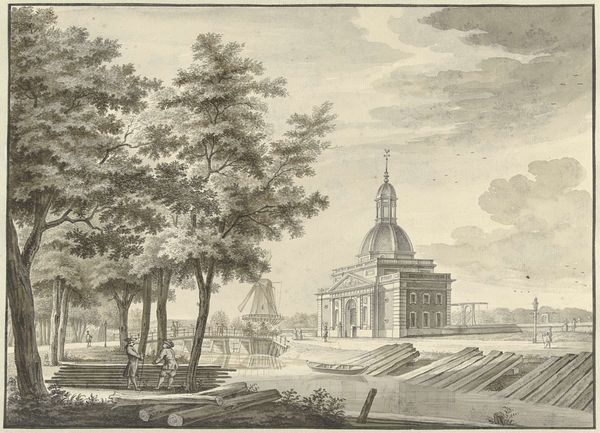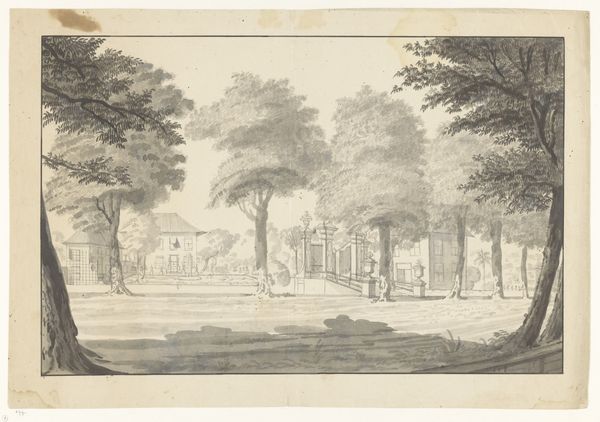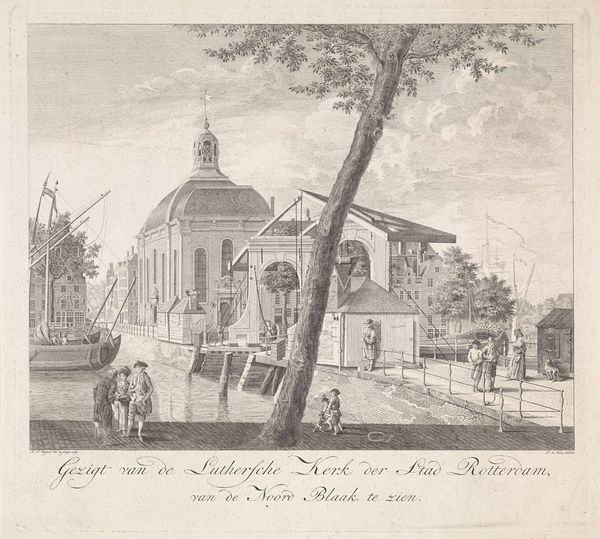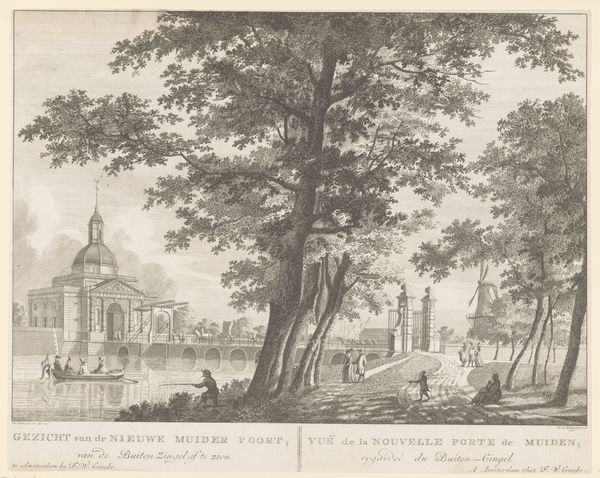
print, engraving
#
dutch-golden-age
# print
#
landscape
#
cityscape
#
engraving
#
rococo
Dimensions: height 145 mm, width 185 mm
Copyright: Rijks Museum: Open Domain
Editor: Here we have "Gezicht op de Koepoort te Leiden," or "View of the Koepoort in Leiden," an engraving created in 1762 by Abraham Delfos. The print depicts a serene cityscape with detailed architecture and lively figures. What do you make of this, particularly considering the social context? Curator: The work offers insight into the public role of art and the politics of imagery during that era. Leiden was a significant center for textile production. What do you notice about how Delfos portrays its infrastructure and inhabitants? Editor: Well, I see a bustling waterway and people from different walks of life. The architecture appears grand, perhaps representing the city's prosperity and projecting a particular civic image. Is this how it might have been perceived by its contemporaries? Curator: Exactly. The Koepoort wasn't just a gate; it was a symbol. Such scenes served as visual propaganda, shaping perceptions of Leiden’s economic vitality and social order. How do you think the burgeoning middle class viewed images like this? Editor: Maybe it instilled pride or perhaps fueled aspirations? Did art like this serve to reinforce the status quo? Curator: Often it did. The artist's choices, consciously or unconsciously, reveal underlying social and political attitudes. Consider the placement of figures; who is centered, who is on the periphery? Editor: That's a really interesting point. It’s clear how this image does more than just depict a city; it actively constructs a narrative about it. I will definitely think more critically about what societal perspectives an artist is suggesting with their choices. Curator: And conversely, whose perspectives might be ignored or erased entirely. That's often where we can start to unpack the politics of imagery.
Comments
No comments
Be the first to comment and join the conversation on the ultimate creative platform.
